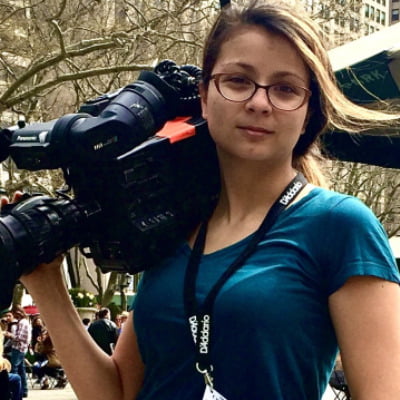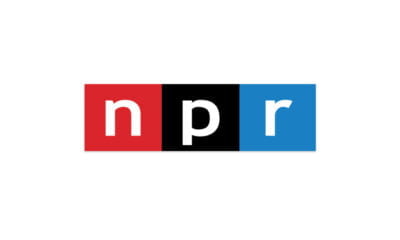BNM Writers
Twitter Subscriptions About to Be Tested
Some major names are about to give it a go, and if it works for them, perhaps, it will work someday for you and for me.
Published
11 months agoon

Make money. It’s something Elon Musk needs to do on Twitter in order to make his $44 billion purchase not look like one of the epic boondoggles in modern business history.
The $8 dollar blue checkmark doesn’t seem to be working all that well. Not too many people are paying for it, and now, we cannot tell the real from the bot. As for ads, they’re annoying and way more frequent, and oh, if I see one more sponsored thread for ChatGPT hacks, I might cry.
So, that brings us to the subscription model.
Earlier in the spring, Musk touted its potential, and now, we are about to find out whether it’s a viable revenue option on both sides of the ledger. That’s because some major names are about to give it a go, and if it works for them, perhaps, it will work someday for you and for me.
For the company, the premise is quite simple.
Right now, people make more money elsewhere, whether it be YouTube or Instagram, and from the Twitter corporate perspective, If you make money on Twitter, Musk likely will, too. You see, when people are successful in earning legitimate profits on the platform, then one can assume that more people will try, and thus, a positive feedback loop will be created.
That’s the concept, especially considering Twitter eventually will take a small cut of the revenue – but not at the outset.
At first blush, it does seem a bit farfetched to expect positive results on a social media service with a defined history of being a for-free culture. The likes of Tucker Carlson and Tomi Lahren will soon test that, and we may find out that it’s not such a long shot after all, especially for national personalities with millions of followers.
Start with the most recent piece of news that OutKick pundit Lahren has started a subscription just to see certain tweets and replies. She has 2.4 million followers and is now charging a buck for the “extras”.
Twitter doesn’t take any cut up front, but according to Musk, a company like Apple gets about 30 percent if you access through the app store, and if it’s web-based, the content producer keeps roughly 92%. Musk indicated that after a year, Twitter will exact a small fee per subscription.
For the sake of argument, for now, we will just give a gross number for our hypotheticals.
If Lahren only pulled in 5% of her following as subscribers, that would be $120,000 a month.
For her, that’s more than a million a year and would not dilute any of her television earnings.
Not a bad number.
Right now, there are more than 3,500 accounts with more followers than Lahren, so plenty of folks have the potential to make plenty of money.
Of course, we don’t have any data from her in terms of how many have subscribed, but there are two things to point to when trying to analyze the possibility of success here.
For one, online reaction has been muted to negative. For every tweet championing her move to a subscription model (none that I saw), there have been multiple negative comments, ranging from frustration … to laughter.
However, the other piece of information is a hard data point. According to Social Blade analytics, Lahren continues to add followers on a daily basis, and on most days, it’s more than a thousand. It should also be pointed out that she is averaging less than before she moved to a subscription model last week — and well off the 6,000 plus she added on May 11.
Lon Seidman, a content creator mainly on YouTube with some 300,000 subscribers, follows content-producer monetization closely. He’s also a frequent contributor to my morning radio show on WTIC 1080 in Connecticut.
He actually thinks Musk may be onto something.
“I think he deserves credit for finding a way for the platform to benefit creators along with the company,” he told me. “This feature popped up after he took over.”
As for Lahren, he said: “I think she’s smart to do it. This concept is nothing new. Twitch and YouTube have had some form of viewer subscription/tip jar for some time. People earn a good living doing it.”
Then there’s Tucker.
He recently announced that when he comes back, it may well be exclusively on Twitter. Assume he uses the site’s subscription model and charges viewers two dollars a month (it would probably be more). It actually sounds inexpensive if he does, say, 15 shows a month – less than a nickel and dime a show.
With 7.6 million followers, if just 10 percent sign up, we are talking about $1.5 million a month, and with minimal overhead.
Before factoring in the cut for Apple or other providers, we’re talking about a gross revenue number of about $18 million a year if you, ahem, subscribe to this logic.
In terms of what he made at Fox, estimates range wildly from $8 million to $35 million. Forbes says $20 million, and that’s sort of right in the middle so let’s go with that.
So basically, Carlson would make almost the same money doing a Twitter-exclusive show.
“Do I think he can match what Fox paid him? Probably not,” says Seidman. “But if you look at others who went independent like Glenn Beck, there was a lot of upstream effort to get a website set up, hire staff to write for it, push links out, etc…
“On Twitter, you have an audience that can be monetized with very little friction – if that audience feels the content is worth paying for.”
There’s the big “If”, and we should soon get an answer.
If it works, then people will work harder to gain followers — something that does not happen as much as it did in the early days because like all the other social media platforms with working revenue models, the bigger the reach, the more money to be made.

Brian Shactman is a weekly columnist for Barrett News Radio. In addition to writing for BNM, Brian can be heard weekday mornings in Hartford, CT on 1080 WTIC hosting the popular morning program ‘Brian & Company’. During his career, Brian has worked for ESPN, CNBC, MSNBC, and local TV channels in Connecticut and Massachusetts. You can find him on Twitter @bshactman.
You may like
BNM Writers
A Message to News/Talk Radio Professionals: Go to the Sales Meeting
Having open lines of communication with sales can only help.
Published
20 hours agoon
April 17, 2024
It isn’t often that you can make a news/talk radio analogy by using a popular movie, but here we go. In the Judd Apatow classic, Knocked Up, Katherine Heigl’s character goes into labor, and Jay Baruchel’s character walks in to see how things are going. Well, the scene is absolutely chaotic, and after blood-curdling screams from Heigl for him to get out, he scrambles out of the room.
Rattled, Baruchel’s character returns to the waiting room, saying, “I shouldn’t have gone in there. Don’t go in there.
“Promise me you won’t go in there.”
Kinda like your experience going to a sales meeting?
Funny, right?
In media, it’s always seemed to be a cliché thing: On-air talent doesn’t quite get sales, and sales doesn’t quite get the on-air side.
On-air folks, almost to a person, can never understand why everything isn’t sold all the time.
“This is such a good segment, it should be so easy to sponsor.”
“Sports, everybody sponsors sports.”
“We should get (Insert local business) to sponsor us. They’re a perfect fit. I don’t get it.”
Guilty as charged on at least two of those exact statements.
After breaking down the wall this week and going to a sales meeting, I am here to urge everyone in production or on the air — go to a meeting.
It will do a few things. First, it will confirm that you belong right where you are. It also will confirm that the sales job is far from an easy job.
The reason for my visit was to update the crew on what we were up to, and then, the head of the station group presented us with a refresh of all the sales material.
I recommend you give it a try.
In all seriousness, having open lines of communication with sales can only help. Back when I was an actual journalist, I would refuse this kind of contact, as if it would somehow jeopardize my integrity.
Now?
Well, clearly, that’s been out the door for quite some time. Oh yeah, be serious. It’s obvious that in order to what I call “survive with the chance to thrive”, we need to work together.
They succeed, we stay on the air doing the most fun job we’ve ever had.
A few things will humble you from the experience, while the language of discourse will absolutely confound you.
Here’s how, starting with humble.
I am notorious for taking certain things personally. You can rip me, rip the show, even make fun of my hair! No problem. But if you don’t call me back? After a second call? That’s personal.
I may write you off forever.
It’s a blind spot, I know … but it’s pretty true. I’ve grown to the point where I can overcome it, especially if the person eventually calls me back, yet it really irks me to the core when people can’t return a call.
In the sales meeting, I expressed some frustration over not being able to contact a potential guest, and one sales rep came back with (paraphrase): “It can take 17 calls to make a connection.”
17? 17!
If you doubt it, all I will say is that the collective response to that statement felt like “Praise Be!”
I could never eat that kind of humble pie.
Then, there was the language, oh, the language. Not F-Bombs but acronyms. For everything.
NTR. CNA. KPI. DOMO. IQP. DJT. Ok, DJT is Donald J. Trump, but the rest are real, I promise.
I was the only person there who had no idea what was being said. It was dizzying.
After all the lingo and humble pie that needed to be eaten to sell stuff, I realized how positive the whole thing was for both sides.
I got the chance to talk to the crew beyond the flippant “Hello” while walking past their offices. I also learned how they felt about the show. About the station. About me.
That was both validating, sobering, and ultimately energizing.
Yes, it lasted almost three times the length of my one required regular weekly meeting. Yes, there were times that I thought I was in a foreign land. And yes, there were moments when my only glimmer of hope was the sunshine coming through the window.
But I have to tell you, I will definitely do it again because it was worth it … just perhaps not every week worth it.

Brian Shactman is a weekly columnist for Barrett News Radio. In addition to writing for BNM, Brian can be heard weekday mornings in Hartford, CT on 1080 WTIC hosting the popular morning program ‘Brian & Company’. During his career, Brian has worked for ESPN, CNBC, MSNBC, and local TV channels in Connecticut and Massachusetts. You can find him on Twitter @bshactman.
BNM Writers
AI is Coming for More Than Just Your Jobs, And the Media Landscape is Changing for the Worse
More important than the loss of more jobs to AI in our industry, we need to take a closer look at the technology’s effect on the media.
Published
20 hours agoon
April 17, 2024
While the world is entranced in President Trump’s jury selection in New York, Artificial Intelligence is stealing your look. AI is stealing your voice and most distressing, AI is becoming more human. It has advanced faster than any other technology known to man.
At the NAB Show, Futuri’s ‘groundbreaking’ AI was applauded. They showed how an AI robot was able to conduct two studies on the media industry. Meaning this AI robot has replaced the job of those in research and development. More important than the loss of more jobs to AI in our industry, we need to take a closer look at the technology’s effect on the media, especially the human toll of AI Beauty Pageants and Deep Fake Pornography.
Announced this week, the first Miss AI Beauty Pageant is coming to a computer near you with $20,000 up for grabs. Now I know what you are thinking: “Krystina, this has nothing to do with media.” Oh, but friends, it does.
Miss Universe and Miss USA combined are industries worth several billion dollars. From paid commercials to designer dresses, hair, and makeup, it is a cash cow. Now, Maybelline can cut out paying advertisers and models by going straight to the programmers. Maybe she’s programmed with it. Maybe its Maybelline? It would cut costs significantly.
Additionally, since the Miss AI beauty pageant also judges its contestant on how many followers she has (can we call a robot she?), you have a significantly cheaper influencer because you don’t have to send the product to her (because again she’s AI).
Revenue from the health, wellness, and beauty industries could now be transitioned to big tech. Yeah, sure, a 12-year-old programmer living out of their mother’s basement might make enough to pay for one semester of college this way, but is that really the route we want to go here? Not to mention this will give people a significantly distorted sense of reality and beauty.
This brings us to AI porn, which has affected Taylor Swift, Alexandria Ocasio-Cortez, and 30 female teens at a New Jersey high school. Let me repeat that for those who missed the story this past fall, a high school boy took the photos of 30 classmates and turned them into porn. These girls are 14. Not only will they likely spend the rest of their lives taking down the AI porn made of them, but to quote AOC, “It has real, real effects not just on the people that are victimized by it, but on the people who see it and consume it. And once you’ve seen it, you’ve seen it.”
I’m not a fan of AOC, but she has a point. The comments made by conservatives about AI porn made using her image are nasty (and senseless). This should be a bipartisan issue. AOC is also not the only well-known person this has happened to. Twitter had to block #TaylorSwift because of AI-generated porn photos. While this prompted the United States Congress to draft a civil law that would allow victims to sue the makers of these AI images, it falls just short of criminalizing the behavior.
Yes, Rep. Neil Hays (R-OK) proposed legislation last year that would criminalize the creation of deep fakes but it has stalled in the halls of Congress.
As for those nasty comments made by conservatives about AOC, they don’t realize this could happen to them. It could happen to their spouses and children. It’s not just celebrities. Those photos you’ve posted of your children from the time they were born, can now be accessed by the pedophiles of the world and turned into porn. A report, published yesterday by Forbes, shows there is already an increase of AI-made child sex abuse images across the web. Are you concerned yet? You should be.
The European Union and the United Kingdom are working on legislation to make it a criminal act. While the proposals are designed to aid those affected by AI porn, they lack targeting AI which is made to subvert or skew political messaging. It’s not just the videos you watch it’s also the articles you read.
While AI videos still have a long way to go before they are truly believable, we’ve extensively reported on media outlets replacing their writers with AI. A December 2023 study by Science Direct found people were able to positively identify AI writing samples only 38.9% of the time. There are now recruiters on Linkedin asking writers (like myself) to teach AI how to write. Sounds interesting until you realize AI would replace my career as a writer.
Received a message asking if I, a writer, could teach #ArtificialInteligence to write. Sounds interesting until you realize #AI would replace my career, as a writer. No thanks. I’ll pass. #dystopian pic.twitter.com/244EoCb7YX
— Krystina Alarcon Carroll (@KrystinaAlaCarr) February 15, 2024
While Black Rock’s Larry Fink believes AI will “boost wages and productivity,” he needs to recognize there is already an abundance of jobs in sectors outside of finance that are being eliminated by AI. Business Insider, CNET, and CNBC have used ChatGPT to write stories. BuzzFeed is using ChatGPT to personalize content, a job once held by a person. Law offices are now using services to Casetext to research case law or Lawgeex to read contracts. Another job once held by a legal assistant, or law school intern.
These are all entry-level jobs that are being eliminated. How are people going to gain experience if AI is replacing the entry-level? So, while I congratulate Futuri on their AI research robot, can we put the brakes on the in-your-face AI capabilities and just keep it in the background? We are clearly not prepared, nor do we understand, the full scope of damage this technology can and is doing. (Does anyone remember Terminator, Robocop, Blade Runner, or Ex Machina? This does not end well for us.)
This is a very serious bipartisan issue that is being swept under the rug. So, while everyone is worried about what media outlets each one of Trump’s jurors watches, you should be more concerned with how the media is reporting (or lack thereof) on AI. It is more than just our jobs at risk, it’s our dignity and livelihood which is already being negatively impacted by the technology.

Krystina Alarcon Carroll is a columnist and features writer for Barrett News Media.She currently freelances at WPIX in New York, and has previously worked on live, streamed, and syndicated TV programs. Her prior employers have included NY1, Fox News Digital, Law & Crime Network, and Newsmax. You can find Krystina on X (formerly twitter) @KrystinaAlaCarr.
BNM Writers
ABC Draws Biggest Solar Eclipse Coverage Audience
ABC News’ Eclipse Across America was also simulcast on the Disney-owned cable networks National Geographic Channel.
Published
20 hours agoon
April 17, 2024
The solar eclipse that captivated our nation on Apr. 8, for better or for worse, was extensively covered by the major networks. They had broadcast from the key areas where complete totality of the moon directly aligning in front of the sun was observed, from Dallas to Indianapolis to Niagara Falls to Vermont.
ABC, with David Muir and Linsey Davis anchoring from Burlington, Vermont, was the most-watched outlet in eclipse coverage among all key figures, according to Nielsen Media Research. From 2-4 PM ET on Apr. 8, ABC delivered 4.448 million total viewers including 920,000 within the key 25-54 demographic as well as 744,000 adults 18-49.
ABC News’ Eclipse Across America was also simulcast on the Disney-owned cable networks National Geographic Channel (271,000 Total Viewers, 76,000 Adults 25-54 and 69,000 Adults 18-49) and Nat Geo Wild (63,000 Total Viewers, 19,000 Adults 25-54 and 17,000 Adults 18-49).
The eclipse coverage helped National Geographic Channel more than doubled its own weekday performances of 2-4 PM ET from Apr. 1-5: Total Viewers +139%, Adults 25-54 +192%, and Adults 18-49 +237%.
CBS, with Norah O’Donnell and Tony Dokoupil anchoring from Indianapolis, was runner-up among total viewers (2.705 million) while NBC (2.406 million total viewers) – with Lester Holt also in Indianapolis, as well as Al Roker in Dallas – was runner-up among key demos (483,000 adults 25-54; 368,000 adults 18-49).
CBS posted 447,000 adults 25-54 and 339,000 adults 18-49.
On cable news, Fox News Channel was the total viewer leader for the solar eclipse and CNN led in all key demos. As indicated in the network breakdown below, CNN attracted the most added raw viewership and demos (nearly quadrupling its 25-54 and 18-49) compared to the aforementioned Monday through Friday 2-4 p.m. period from Apr. 1-5:
Fox News Channel
- Total Viewers: 2.264 million (+829,000; +58%)
- Adults 25-54: 230,000 (+73,000; +47%)
- Adults 18-49: 155,000 (+54,000; +54%)
CNN
- Total Viewers: 1.643 million (+1,046,000; +175%)
- Adults 25-54: 332,000 (+246,000; +286%)
- Adults 18-49: 221,000 (+163,000; +283%)
MSNBC (compared to Apr. 1-5 @ 1-4 p.m.)
- Total Viewers: 0.916 million (+120,000; +15%)
- Adults 25-54: 121,000 (+41,000; +51%)
- Adults 18-49: 81,000 (+31,000; +62%)

Douglas Pucci is a Bronx native and NYU graduate analyzing news television ratings for Barrett News Media. He did an internship at VH1’s “Pop Up Video” in 1997. After college, Pucci went on to design, build and maintain websites for various non-profit organizations in his hometown of New York City. He has worked alongside media industry observer Marc Berman for over a decade reporting on all things television, first at Cross MediaWorks from 2011-15 then at Programming Insider since 2016. Pucci also contributed to the sports website Awful Announcing. Read more: https://programminginsider.com/author/douglas/














